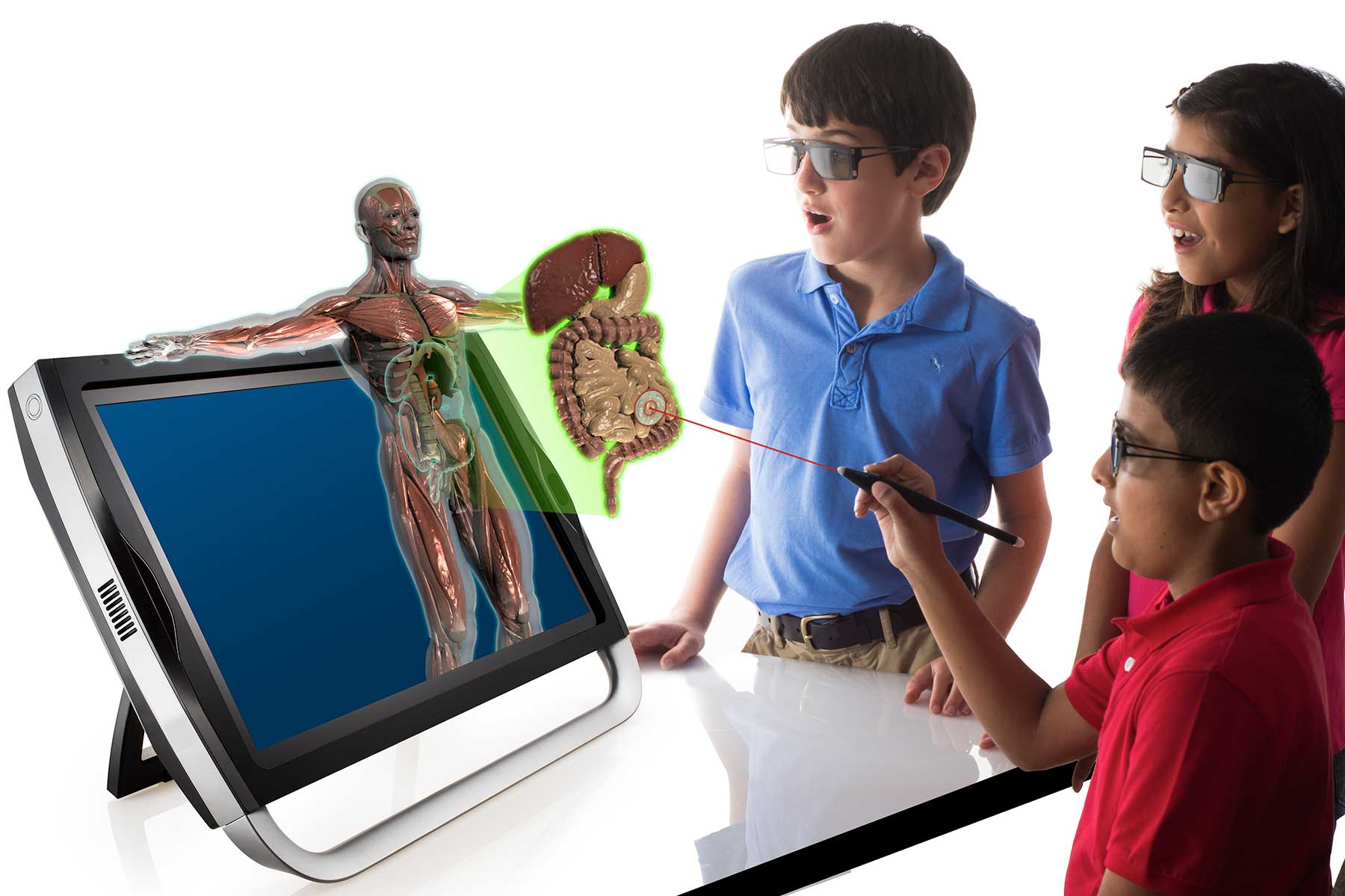
Using Virtual Reality and Augmented Reality in Immersive Learning
Most students fall under the four basic learning styles:
- visual
- auditory
- reading/writing
- kinetic
Similar to how images and movies are used to help students understand a lesson, immersive learning can introduce a new medium to engage the senses. For example, imagine a virtual tour of the human body during an anatomy lesson or experiencing a jungle scene with total audio immersion through realistic surround provided by a Dolby ATMOS environment.
How can Immersive Learning with Virtual Reality be used in a classroom?
First an explanation of the difference between “augmented reality” and “virtual reality”. The VR we are referring to with this article involves the use of a special headset that blocks your peripheral vision and projecting video into the user’s vision, which results in the user having a “sense” that they are inside of the virtual world.
“Augmented Reality” refers to technology that allows you to place digital images and/or video “on top of” the real world. Currently the most popular use is on AR-compatible smartphones and tablets. The screen displays an image of the real world and super imposes the digital “assets” (video, images, etc.) on top of the view.
Virtual Reality creates a fun and exciting learning experience in the classroom that gives students unique access to different environments and periods of time as never before. For example, students could tour of the Roman Coliseum and watch gladiators fight in history class or take a trip through the world of atoms in science class.
How can Immersive Learning with Augmented Reality be used in a classroom?
Because AR is rooted in reality, it can be used in addition to classical teaching styles. With AR, students can use their smartphones to see comments or labels on diagrams and have the option to read more about something they need further clarification. Teachers can show their students the solar system in their classroom or 3D models of objects to study up close without storing and transporting them.
Augmented Reality can supplement current teaching styles. Students could use their smartphones and tablets to views notes and hyperlinks to more information overlaid on diagrams and models in the real world. Teachers could display animals, machinery, 3D models, etc. at full size without the need to find storage for these items in the real world.
How can Immersive Learning with VR/AR benefit the classroom?
- Increase Engagement
- Supports a variety of Learning Styles
- Entertaining
- Improved recall
- Better management of the The Learning Experience
More information…
The source for this article was Lorne Fane’s article on Forbes: “How VR And AR Are Impacting Immersive Learning”. Please visit Forbes to view even more detailed information about today’s topic.


